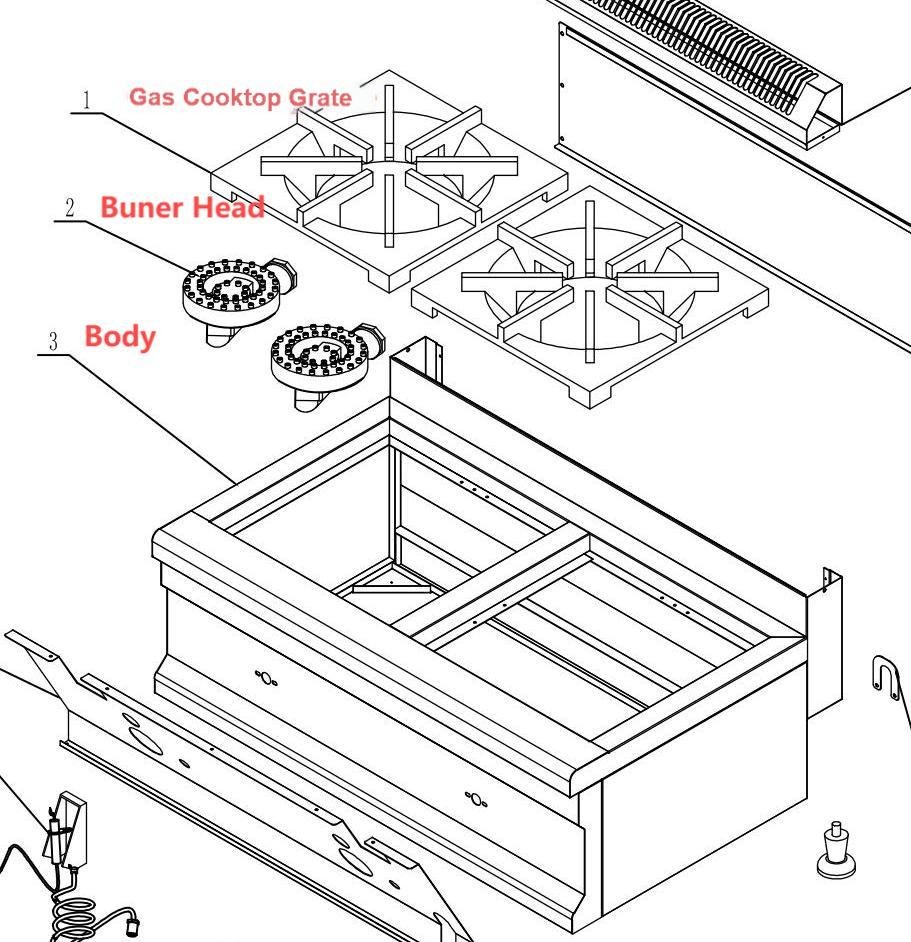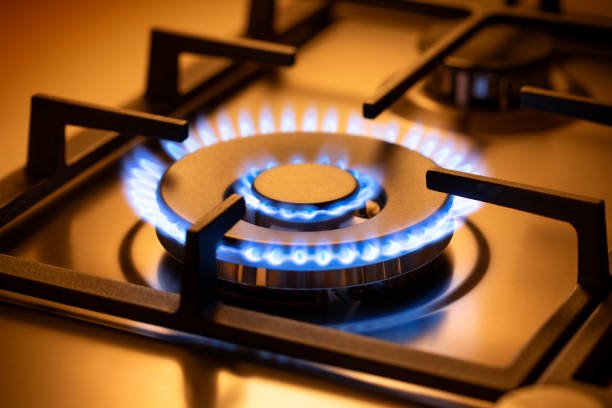When choosing gas stoves, you need to pay special attention to the material of the burner, which has an important impact on the fire output, durability, and cleaning convenience of the gas stove. Common gas stove burner materials are mainly cast iron, stainless steel, aluminum alloy, copper, silicon aluminum alloy, and ceramic coating. Each material has its own characteristics and applicable scenarios:

Cast Iron
Features:
High-temperature resistance: Cast iron can withstand high temperatures, maintain stable firepower, and is suitable for long-term high-temperature use.
Even heat distribution: Cast iron has excellent heat capacity and heat distribution performance, which can ensure that the pots are heated evenly.
Strong durability: Very durable and long life, suitable for high-intensity commercial kitchens.
Maintenance required: Cast iron is easy to rust and needs to be oiled regularly for maintenance.
Applicable scenarios:
The cast iron burner has a good texture, low cost and low price, but it is easy to have internal voids, small holes, and sand eyes during the casting process. There may be leakage in the later stage, and the burner may be oxidized and deformed after long-term use. It is suitable for commercial kitchens, high-frequency cooking, and occasions that require stable firepower.

Stainless Steel
Features:
Corrosion resistance: Stainless steel is corrosion-resistant and anti-oxidation, and can keep the appearance clean.
Easy to clean: The surface is smooth and oil stains are easy to clean.
Durability: Stainless steel is relatively durable, but may not be as high-temperature resistant as cast iron.
Modern appearance: Stainless steel has a modern feel and is suitable for the overall design style of the kitchen.
Applicable scenarios:
Home kitchens, commercial kitchens, especially suitable for kitchen environments that focus on appearance and easy cleaning.
Aluminum Alloy
Features:
Light weight: Aluminum alloy is relatively light and easy to move and clean.
Strong corrosion resistance: Aluminum alloy has strong resistance to moisture and corrosion.
Poor thermal conductivity: Compared with cast iron, aluminum alloy has poor thermal conductivity and is not as uniform as cast iron.
Applicable scenarios:
The most widely used materials on the market, among which silicon aluminum alloy is the best, heat-insulating, burn-resistant, and effectively protects internal components from thermal expansion and contraction. It is suitable for low-frequency use or light home kitchens, and is suitable for users who pay attention to lightness.
Copper
Features:
Excellent thermal conductivity: Copper has very good thermal conductivity and can quickly heat pots and pans, making it suitable for precise cooking.
Beautiful appearance: Copper has a bright color and is often used in high-end kitchen equipment, with high ornamental value.
Poor corrosion resistance: Copper may oxidize over time and requires regular maintenance.
Applicable scenarios:
Because of its high price, pure copper stove heads are relatively rare on the market. They are suitable for high-end commercial kitchens or home kitchens, especially for cooking needs that require precise control of firepower.
Silicon Aluminum Alloy
Features:
High temperature and thermal shock resistance: This material can withstand extreme temperature changes and is suitable for high temperature use.
Strong corrosion resistance: It has good corrosion resistance.
Lightweight and strong: Compared with traditional cast iron, silicon aluminum alloy is lighter while maintaining good durability.
Applicable scenarios:
Commercial kitchens and high-end home kitchens, especially those that require high temperature resistance and durability.
Ceramic Coating
Features:
Easy to clean: The surface of the ceramic coating is smooth and not easy to adhere to oil stains, making it very easy to clean.
Strong corrosion resistance: The ceramic coating can effectively prevent the stove head from rusting and corrosion.
Uniform heat distribution: Ceramic materials can help evenly distribute heat and avoid local overheating.
Disadvantages: Long-term high temperature and external force collision can easily cause the coating to deform and fall off, leading to rust, perforation and gas leakage and other fire risks.
Applicable scenarios:
Low price, short service life, but smooth and beautiful, suitable for home kitchens or light commercial kitchens, especially for users who like simple and clean work.
Summary
When choosing the material of the gas stove burner, you need to consider factors such as thermal conductivity, durability, cleaning difficulty and frequency of use. Cast iron and stainless steel are common high-durability options suitable for frequently used kitchens; copper and aluminum alloys are suitable for users who pursue efficient heating and lightness; ceramic coating is suitable for home kitchen users and provides a convenient cleaning experience. According to your actual use needs, choosing the right material can improve cooking efficiency and extend the service life of the burner!
